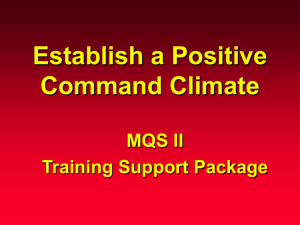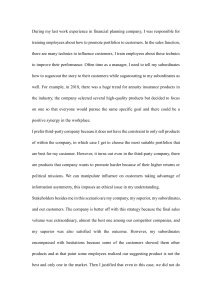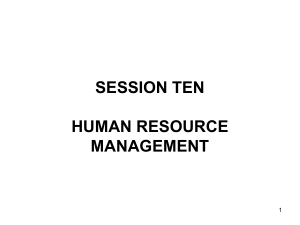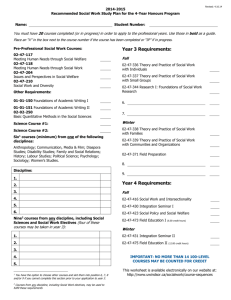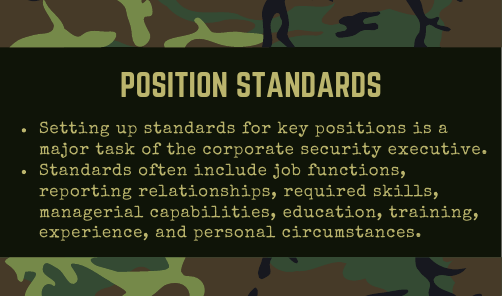
POSITION STANDARDS Setting up standards for key positions is a major task of the corporate security executive. Standards often include job functions, reporting relationships, required skills, managerial capabilities, education, training, experience, and personal circumstances. HIRING This process involves sourcing candidates through advertisements or referrals, interviewing, shortlisting, background investigation, selection of the best candidates, and finally preparing the job offer. TRAINING AND PROFESSIONAL DEVELOPMENT Despite advancements in security technologies and literature, these may not immediately be implemented in the country. Junior security officers can ensure their professional development by conducting their own research and learning from professionals with recognized competence. DISCIPLINE BASIC RULES OF DISCIPLINE 1.Put rules in writing and ensure that employees understand them. Employees are entitled to know what is expected of them. 2.Do the disciplining in the privacy of the office. Do not chastise one in the presence of others. 3.Be objective and consistent. Discipline condemns the act and not the person. 4.Educate and do not humiliate. The idea is to help, not to hurt. 5.Keep a file of all employees' infractions. This can come in handy later on. 6.Exercise discipline promptly. The delay raises questions. APPRAISAL OF RESULTS Regular performance appraisals are crucial for evaluating subordinates’ performance. These appraisals can be the basis for administrative actions such as promotions, salary increases, or even separation from the organization. PROMOTIONS Promoting deserving employees is an important function of a security executive. Vacancies can be filled by promoting staff members based on their track record and expected performance in the higher position. MORALE AND WELFARE Employee welfare and morale are of utmost importance in security. The security executive should motivate subordinates, foster teamwork, and instill pride in the organization. The well-being, welfare, and morale of the people are principal considerations. COMMUNICATION Continuous communication within the security organization and with other subdivisions of the company is a major responsibility of the security executive. The security executive should be able to communicate in all directions: upward, downward, and laterally; as well as receive communications from above, below, and laterally. TEN T N E M E M A N A GL E S RU 1. Definite and clean-cut responsibilities should be assigned to each executive. 2. Responsibility should always be completed with corresponding authority. 3. No change should be made to the scope or responsibilities of a position without a definite understanding to that effect on the part of all persons concerned. 4. No executive, or employees, occupying a single position in the organization should be subject to definite orders from more than one source. 5. Orders should never be given to subordinates over the head of a responsible executive. The management should instead supplant the officer-in-question. 6. Criticisms of subordinates should, whenever possible, be made privately, and in no case should be criticized in the presence of executives or employees of equal or lower rank. 7. No dispute or difference between executives or employees as to authority or responsibilities should be considered too trivial for prompt and careful adjudication. 8. Promotions, wage adjustments, and disciplinary actions should always be approved by the executive immediately superior to the one directly responsible. 9. No executive or employee should ever be required or expected to be at the same time an assistant to, and critic of, another. 10. Any executive whose work is subject to regular inspection should whenever practicable, be given the assistance and facilities necessary to enable him to maintain an independent check of the quality of his work.
